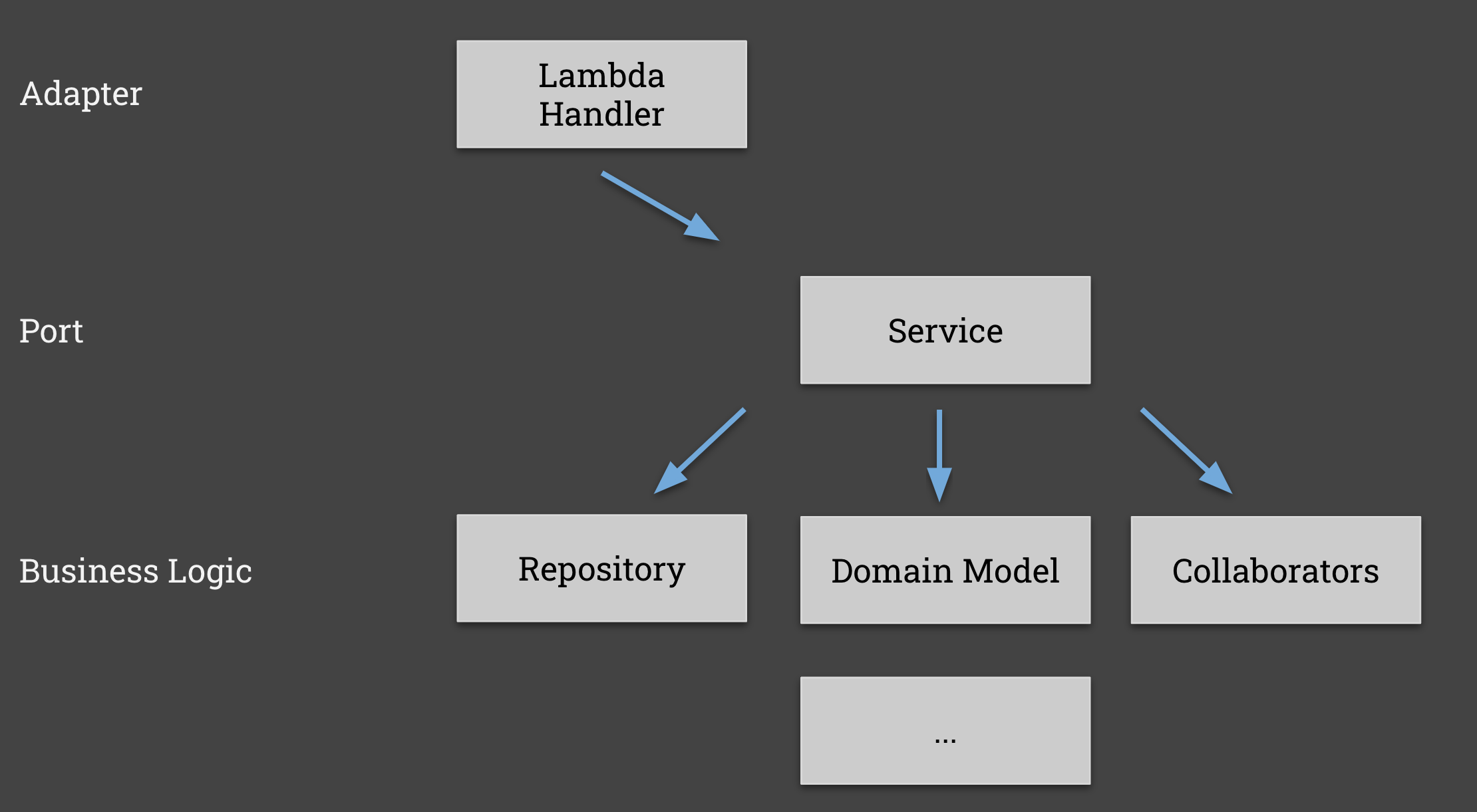Example NodeJS AWS SNS Consumer
Source Code
https://github.com/pactflow/example-consumer-js-sns
This is an example of a NodeJS AWS SNS consumer that uses Pact, PactFlow and GitHub Actions to ensure that it is compatible with the expectations its consumers have of it.
It is using a public tenant on PactFlow, which you can access here using the credentials dXfltyFMgNOFZAxr8io9wJ37iUpY42M/O5AIZWxelWbLvqMd8PkAVycBJh2Psyg1. The latest version of the Example Consumer/Example Provider pact is published here.
The project uses a Makefile to simulate a very simple build pipeline with two stages - test and deploy.
- See the canonical consumer example here: https://github.com/pactflow/example-consumer.
- See also the full PactFlow CI/CD Workshop for which this can be substituted in as the "consumer".
Scenario
In the following diagram, we'll be testing the "Consumer", a Lambda function that receives product updates via the product SNS topic.
We need to be able to test that we are able to receive (consume) product events from the SNS topic as follows:

Theory
Modern distributed architectures are increasingly integrated in a decoupled, asynchronous fashion. Message queues such as ActiveMQ, RabbitMQ, SNS, SQS, Kafka and Kinesis are common, often integrated via small and frequent numbers of microservices (e.g. lambda).
Pact supports these use cases, by abstracting away the protocol and focussing on the messages passing between them.
To reiterate: Pact does not know about the various message queueing technologies - there are simply too many! And more importantly, Pact is really about testing the messages that pass between them, you can still write your standard functional tests using other frameworks designed for such things.
When writing tests, Pact takes the place of the intermediary (MQ/broker etc.) and confirms whether or not the consumer is able to handle a given event, or that the provider will be able to produce the correct message.
How to write tests?
We recommend that you split the code that is responsible for handling the protocol specific things - in this case the lambda and SNS input - and the piece of code that actually handles the payload.
You're probably familiar with layered architectures such as Ports and Adaptors (also referred to as a Hexagonal architecture). Following a modular architecture will allow you to do this much more easily:

This code base is setup with this modularity in mind:
- Lambda Handler
- Event Service
- Business Logic
The target of our consumer pact test is the Event Service, which is responsible for consuming a Product update event, and persisting it to a database (the Repository).
See also:
- https://dius.com.au/2017/09/22/contract-testing-serverless-and-asynchronous-applications/
- https://dius.com.au/2018/10/01/contract-testing-serverless-and-asynchronous-applications---part-2/
Pre-requisites
Software:
- AWS SAM
- An AWS account (if you want to actual test and run the lambda function)
- https://docs.pactflow.io/docs/workshops/ci-cd/set-up-ci/prerequisites/
Usage
See also the PactFlow CI/CD Workshop for more background.
Testing
- Run the unit tests:
npm t - Run a (local) lambda integration test:
npm run test:integration
Running
- Deploy the actual app:
./script/deploy.sh(see below for more background) - Publish a test event:
npm run publish - View the lambda logs:
npm run logs
Here is some sample output publishing and viewing the logs:
➜ example-consumer-js-sns git:(master) ✗ npm run publish <aws:pact-dev>
> product-service@1.0.0 publish /Users/matthewfellows/development/public/example-consumer-js-sns
> ./scripts/publish.sh
finding topic
have topic: arn:aws:sns:ap-southeast-2:838728264948:pactflow-example-consumer-js-sns-ProductEvent-144XVHN8QP2D3, publishing message
{
"MessageId": "735a2daa-7eaa-53d7-b362-75b0d9227708"
}
> product-service@1.0.0 logs /Users/matthewfellows/development/public/example-consumer-js-sns
> sam logs -n ProductEventHandler --stack-name pactflow-example-consumer-js-sns -t
2020/11/03/[$LATEST]df9d6b71ef1e49789f4ebca64fc19270 2020-11-03T00:25:24.984000 START RequestId: 47e97e7d-52cf-4c83-9133-545749ed2750 Version: $LATEST
2020/11/03/[$LATEST]df9d6b71ef1e49789f4ebca64fc19270 2020-11-03T00:25:25.012000 2020-11-03T00:25:24.988Z 47e97e7d-52cf-4c83-9133-545749ed2750 INFO {
Records: [
{
EventSource: 'aws:sns',
EventVersion: '1.0',
EventSubscriptionArn: 'arn:aws:sns:ap-southeast-2:838728264948:pactflow-example-consumer-js-sns-ProductEvent-144XVHN8QP2D3:efaf0845-3847-4b5d-a4b1-68f33ef524e8',
Sns: [Object]
}
]
}
2020/11/03/[$LATEST]df9d6b71ef1e49789f4ebca64fc19270 2020-11-03T00:25:25.032000 END RequestId: 47e97e7d-52cf-4c83-9133-545749ed2750
2020/11/03/[$LATEST]df9d6b71ef1e49789f4ebca64fc19270 2020-11-03T00:25:25.032000 REPORT RequestId: 47e97e7d-52cf-4c83-9133-545749ed2750 Duration: 48.28 ms Billed Duration: 100 ms Memory Size: 128 MB Max Memory Used: 64 MB Init Duration: 136.98 ms
If you edit the file ./scripts/publish.sh to remove a valid property, or upload invalid JSON you will get something like this:
2020/11/03/[$LATEST]df9d6b71ef1e49789f4ebca64fc19270 2020-11-03T00:36:23.376000 2020-11-03T00:36:23.376Z 3eb496cd-c663-4ae2-a717-8f261b7ad48c ERROR Invoke Error {"errorType":"AssertionError","errorMessage":"id is a mandatory field","code":"ERR_ASSERTION","generatedMessage":false,"expected":true,"operator":"==","stack":["AssertionError [ERR_ASSERTION]: id is a mandatory field"," at new Product (/var/task/src/product/product.js:5:5)"," at handler (/var/task/src/product/product.handler.js:7:23)"," at /var/task/src/service/product.js:10:44"," at Array.map (<anonymous>)"," at Runtime.lambda [as handler] (/var/task/src/service/product.js:10:33)"," at Runtime.handleOnce (/var/runtime/Runtime.js:66:25)"]}
2020/11/03/[$LATEST]df9d6b71ef1e49789f4ebca64fc19270 2020-11-03T00:36:23.416000 END RequestId: 3eb496cd-c663-4ae2-a717-8f261b7ad48c
2020/11/03/[$LATEST]df9d6b71ef1e49789f4ebca64fc19270 2020-11-03T00:36:23.416000 REPORT RequestId: 3eb496cd-c663-4ae2-a717-8f261b7ad48c Duration: 75.82 ms Billed Duration: 100 ms Memory Size: 128 MB Max Memory Used: 65 MB